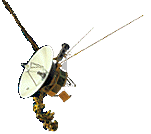| Process Control |
1. Understanding the problem
1.1 Dynamics and control
The main goal of this course is to enable the (future) Chemical Engineer to deal
with Process Control. The first step is to understand and answer questions such
as:
- what is Process Control?
- why control a process?
- how to control a process?
- what is the role of the control engineer?
One one the most beloved concepts for the student of Chemical
Engineering is the steady state. Whenever you find that an exercise has
these magical words, we quickly realize that a simplified equation can be used
(all time derivatives can be made equal to zero!).
This simplification is quite useful for equipment and plant design, since it
reflects the desirable operating conditions. But in most cases, steady
state is only an objective, which can seldom be maintained for a long time.
Dynamics: things change
In any industrial process, operating conditions are subject to change. Liquid
level in a vessel, pressure inside a tower, flow rate of a reactant or its
composition; all these conditions may (and often will) vary with time. Even the
data that is assumed to be constant during the design (such as ambient
temperature) use to change in spite of our simplifications.
Control: trying to get hold of the process
To control a process means to act upon it (or upon the conditions the process is
subjected to) in order to attain a goal - we may, for instance, want to hold the
process as close as possible to a given steady state, even if external
conditions would have it deviate from the steady state.
Control objective: needed
An old joke: the person comes running into an elevator, breathless. Asked "which
floor?", he replies "any floor will do, I'm in the wrong building anyway".
A bad joke perhaps, but it illustrates a fundamental point for Process Control.
We need to have a clear understanding of our goals (objectives). It makes no
sense to try and act upon a process if we have no idea what for (and what the
risks are, for that matter).
1.2 Day to day examples
| Keep car on the road |

|
monitor trajectory/ speed/ traffic
act upon pedals/ shiftgear/ wheels
control trajectory
safety: guard-rails/ walls
|
| Take a hot shower |

|
monitor water temperature/ flowrate
act upon faucets
control temperature (and, if possible, flowrate)
safety: room to avoid water if too hot or too cold
|
| Control your budget |
| $$$
|
monitor your accounts
act upon payments
control your budget
safety: savings?
|
| Visit Europa |

|
monitor trajectory/ fuel
act through TCMs
control trajectory
safety: . . .
|
| Fly a plane |

|
monitor everything you can
act upon a lot of controls
control altitude
safety: . . .
|
1.3 A simplified graphical representation
The way a controller acts can be graphically depicted as an information flow
between modules, each with a different function. In the picture below, a
monitoring module gathers data from the process and sends it to the controller
module (this may entail a number of steps, such as signal processing and
conversion). The controller takes this data and makes some decisions which it
communicates to a final control element, where the control action is performed
by acting upon some process condition that can change the way the process
behaves.

Note that there is an important
communication flow that is not represented in the picture: where does the
controller get the control objectives from?
1.4 The role of the Chemical Engineer
In the following chapters, we will discuss how the Chemical Engineer is able to
take active part in the areas described below:
- contribute to the process design (controllable design)
- determine control strategies
- select sensors (type, location)
- select final control elements
- design and specify control systems
- contribute in the development of operator interface (displays)
|

